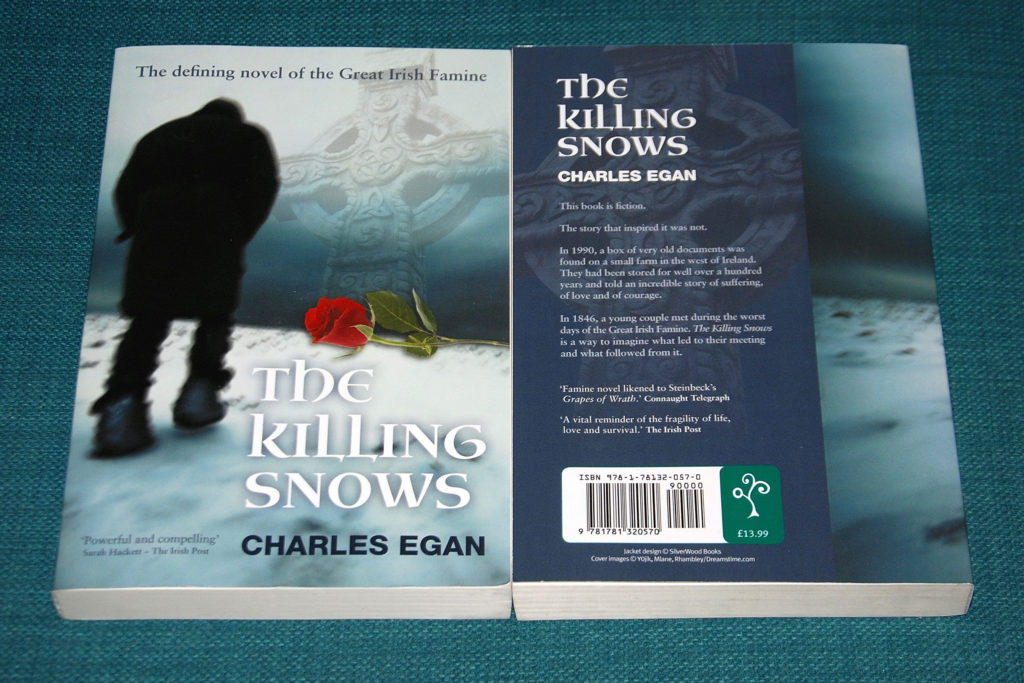This book is fiction. The story that inspired it was not.
In 1990, I came into possession of two documents which were fascinating, and in their own way, quite savage.
My father had been brought up on a small farm in County Mayo in the West of Ireland. Following the death of one of his brothers, he gave us a box of documents which, by their dates, had been stored for over a hundred years. They included a lease, a number of letters and two payrolls from the 1840s.
It was with a sense of shock that I realized what they really were. These were the documentary evidence of the Great Irish Famine in East Mayo. They were also the confirmation of the stories I had learned as a child as to how my family survived the Famine.
The two payrolls were the most horrific. They detailed the wages for gangs of men, women, and children working on two roads in east Mayo in the winter of 1846. The desperately low rates of pay – as low as three pennies a day – proved that this was Famine Relief. Local research filled in more of the story, a brutal one of hunger, fever, and death.
The Irish Famine had started with the partial failure of the potato crop in the autumn of 1845. In 1846 the potato failed again, and this time the failure was nearly total.
The Workhouses could not cope, and so the enormous Famine Relief schemes were started, and kept running through the coldest and worst winter of the past 300 years. Hundreds of thousands of starving people were employed on roadworks, building and repairing roads all across Ireland.
 Hunger killed thousands of them. The murderous blizzard of December 1846 killed many thousands more and brought the Works to a halt all across the country. But they opened again in January 1847, and the arctic cold went on. By the time the soup kitchens took over in March, the Works were employing three-quarters of a million survivors, mostly in the West of Ireland, all trying desperately to feed their families on pitifully low wages. Then, as the winter receded, a vicious fever epidemic killed hundreds of thousands of people right across Ireland. 1846 was shocking, but Black ’47 would never be forgotten.
Hunger killed thousands of them. The murderous blizzard of December 1846 killed many thousands more and brought the Works to a halt all across the country. But they opened again in January 1847, and the arctic cold went on. By the time the soup kitchens took over in March, the Works were employing three-quarters of a million survivors, mostly in the West of Ireland, all trying desperately to feed their families on pitifully low wages. Then, as the winter receded, a vicious fever epidemic killed hundreds of thousands of people right across Ireland. 1846 was shocking, but Black ’47 would never be forgotten.
Research also confirmed an old family tradition which I had never believed. This was the story of an utterly impossible love set against the terror of the times. So in the end ‘The Killing Snows’ is much more than historical fiction. It is an attempt to understand how such a love could have happened and how the impossible became true.
Charles Egan



